The dwarf Japanese maple is one of the most attractive small trees in the world. Whether you grow it in the garden, in a pot in its “regular” size, or as an even tinier plant in bonsai form, be sure that it will delight you with its colorful leaves throughout most of the year. So, keep reading if you want to learn everything about how to successfully plant and grow dwarf Japanese maple trees!

Dwarf Japanese Maple
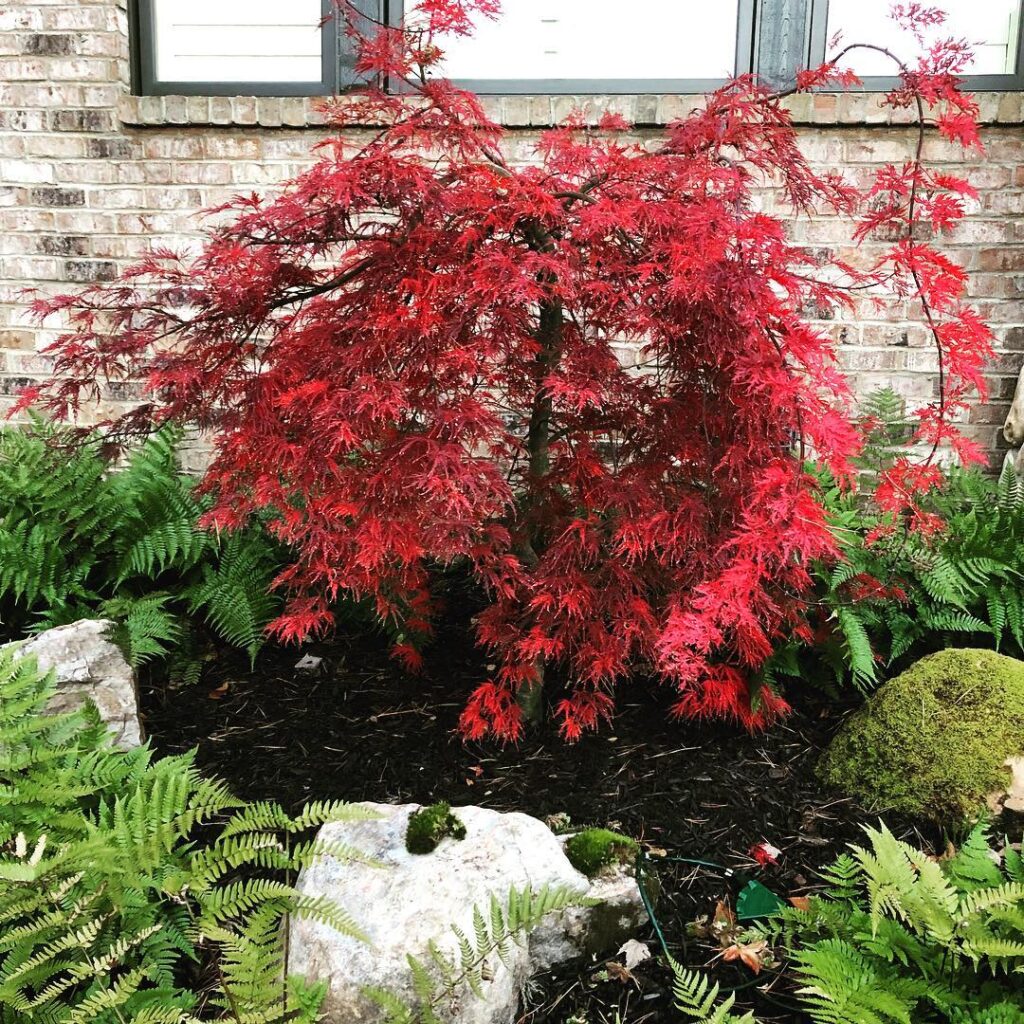
Dwarf Japanese maples (Acer palmatum) are deciduous trees from the Sapindaceae family characterized by compact shape, vibrant foliage color, and slow growth.
This “small” plant, which can grow three to eight feet in height and is just one of the hundreds of Japanese maple species, has a branched trunk that, early in its life, often begins to split into two equal trunks, taking the shape of a letter Y.
Crown and Branches
The slender crown has a rounded shape, while the thin and bare twigs feature red color, which helps this dwarf tree attract attention even when it doesn’t have any leaves.
Foliage

Speaking of leaves, the acer part of the Latin name means pointed, which was given in reference to the foliage that features five to nine pointed lobes.
Palmatum, on the other hand, means palmate or hand-like and refers to leaf shape, which is spread like a human palm. In spring, the leaves are green, yellow, and red, while in autumn, red, orange, purple, or golden yellow colors emerge.
Related: Plants That Just Won’t Give Up – The 9 Oldest Bonsai Trees In The World
Flower And Fruit
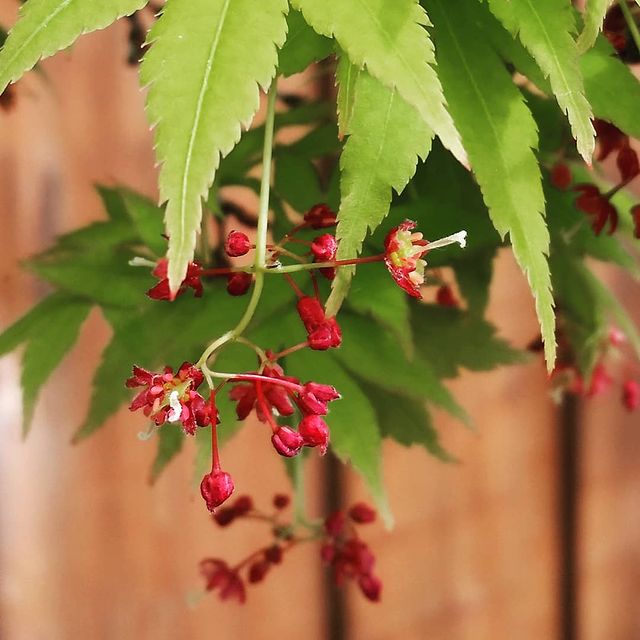
The deep red or purple monoecious flowers are borne in short stalks. Flowering starts in early spring and continues through May, after which the fertilized flowers develop into fruits. Samara, the name of the fruit, is a pair of winged seeds about half an inch long. Each contains one seed that will ripen in September or October.
Origin And Landscaping
Dwarf Japanese maple is naturally distributed in East Asia (Japan, North and South Korea, Mongolia). Unlike its “adult” relative, which is very common in public gardens and parks, it is found chiefly in small gardens and private spaces.
Both regular and dwarf varieties of Japanese maple trees can be planted with companion plants, such as shrubs and shorter woody species. Still, it’s best to grow them isolated from other plants as that will give them the best chance to show the amazingly colored lacy leaves in their full glory.
Light Requirements And Site Location
Generally speaking, dwarf maples not only tolerate partial shade but thrive in it, although the full sun is also suitable in climates with hot weather.
However, since there are many cultivars that feature foliage in different colors, it is best to give instructions regarding sun exposure for each of the most popular ones.
The green-leaved cultivars should be planted in areas with afternoon shade, variegated-leaf cultivars in semi-shaded areas, and red-leaved cultivars in places that receive at least half a day of direct sunlight (otherwise, the leaves lose their distinctive red color).
Attention must also be paid to the area around the trunk. It must be free of undergrowth and overgrown grass that can prevent the normal flow of water and nutrients to the tree. In cases of high summer heat or low temperatures accompanied by gusts of cold wind, leaf scorching can occur.
Temperature
Japanese dwarf maple is a plant that tolerates both continental winters and summer heat well, which means you can experiment with cultivation outside the recommended USDA zones 6 to 8.
Be sure to grow them in places sheltered from icy winter and high winds, as that has proved to be the most suitable for their successful cultivation.
Protection is especially important in the first two to three years, especially for plants grown in pots, which should be overwintered in areas with the wind conditions mentioned before.
Watering
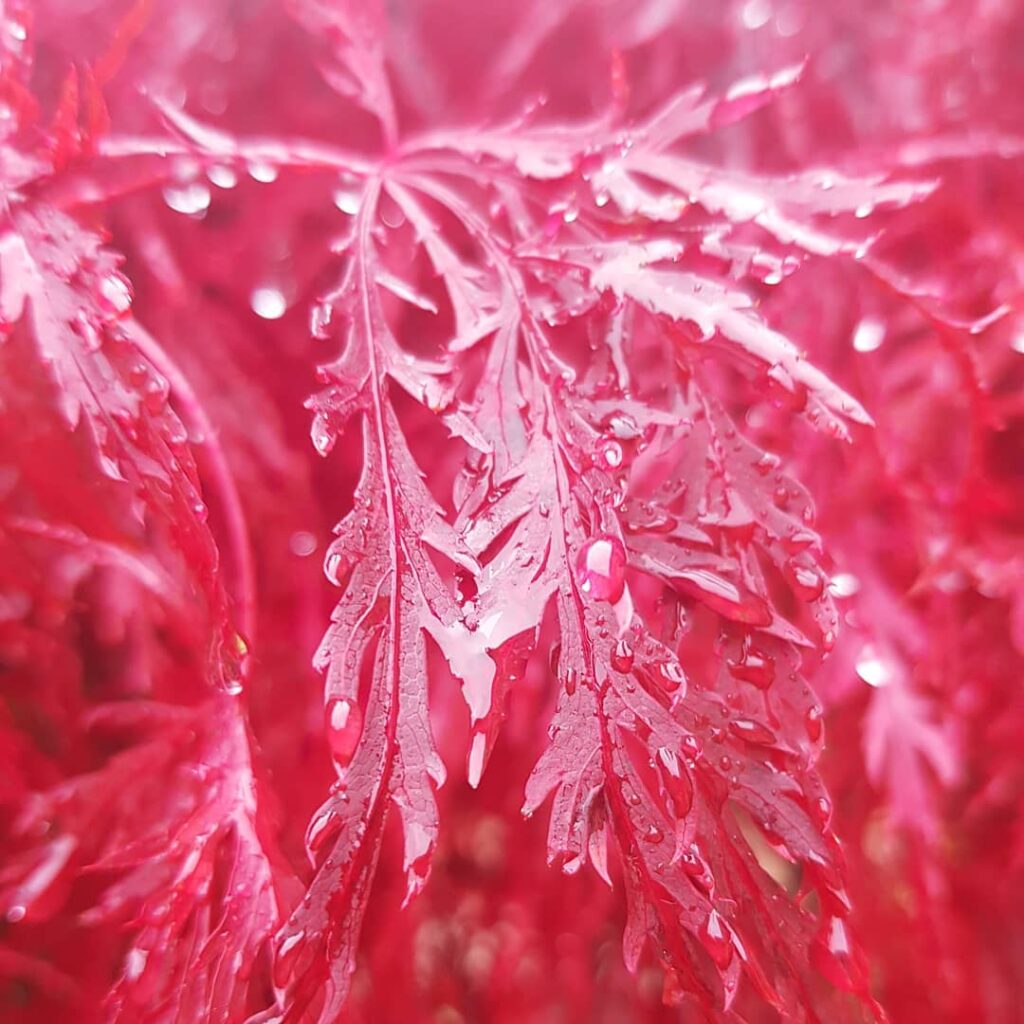
Dwarf Japanese maple is a relatively drought-tolerant plant that requires a regular and moderate watering regimen. Try to keep the substrate consistently slightly moist, but do not allow the ground under the tree to become waterlogged, as the plant is sensitive to excess water around the root.
Related: Mesmerizing Shapes and Vibrantly Colored Flowers in One – Flowering Bonsai
Soil
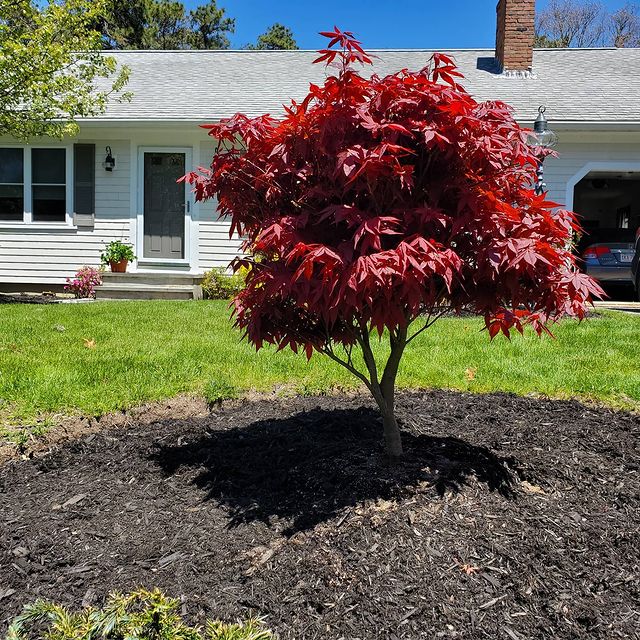
Japanese dwarf maple does not thrive on heavy clay soils because its root is susceptible to rotting. Due to the lack of oxygen in these types of soils, the young shoots of the roots do not breathe, which causes the young specimens to die.
In case you have no other option but to grow it in a garden where the soil is like this, shallow planting on the most elevated part of the soil, which causes water runoff, is recommended.
First, dig a planting hole deeper than the root system, and fill it halfway with organic matter and little gravel or sand. Then, place a young maple seedling and fill the rest of the hole with organic matter.
If you decide to grow Japanese maples on some type of light soil, you should mulch the soil with pine needles or shredded dry tree bark, as that will protect it from drying out but also prevent the growth of weeds. Do place the mulch six to eight inches away from the base of the tree so that moisture does not remain around the tree.
In well-drained light soils, the hole is dug to a depth corresponding to the length of the dwarf Japanese maple’s root system and width twice that of the root.
Fertilizer
Trees that are one to two years old are recommended to be fertilized in late winter or early spring with organic fertilizer rich in nitrogen because their root system is still developing at that time.
Frequent fertilization of adult Japanese dwarf maples is not recommended, as this increases the risk of various diseases. Therefore, feed them once a year at the time of leafing with a slow-release fertilizer that should be introduced directly into the soil.
Also, don’t forget to thoroughly water the plant after fertilizing it!
Pruning
Dwarf Japanese maple is a plant that asks for very little pruning, which is mainly done to prevent plant diseases. It is recommended to be done during the dormant period, i.e., when the leaves have fallen off. Pruning at the time of fruit budding, which can be recognized by the dripping of juices when you first start cutting the plant, is not suitable.
When pruning, cut the branches just above a pair of buds. The broken and dried twigs are removed first, then those that are extra or excessively thicken the crown’s interior. When the branches start to grow anew, two shoots appear, one of which can be removed again.
After pruning, applying a wound protection agent, i.e., gardener wax, to the cut surface is advisable. In young and grafted plants, sometimes wild shoots may appear on the substrate, which also needs to be removed.
Propagating
Japanese dwarf maples can be propagated by cuttings or seeds. If you decide to go the first route, combine the cuttings with hormones in the spring by first moistening the cuttings and then immersing them in a rooting hormone powder to stimulate root development.
After that, place the cuttings upright in a hole in the ground with at least two inches of their top sticking out above. The bottom of the hole should be sprinkled with a bit of sand. Preventive spraying with fungicide is also recommended.
When propagating by seeds, the seeds must be fresh and ripe (collected in October), after which they should be placed in dry sand and stored in a cold place (stratification), which is necessary for them to germinate.
Plant the seeds prepared in this way in the spring. But, you should know that the specimens grown from seeds will not completely resemble the mother plant.
Bonsai or Container Growing

This species is ideal for growing in pots and containers (so-called bonsai growing) because it has shallow roots and does not need much water. And let’s not forget the dwarf part!
If you want to grow dwarf Japanese maples in a container, buy soil with a moderate amount of humus. Otherwise, the plant may lose on the appeal front as some of its distinguishing characteristics, like leaves, will not be as charming as possible.
The advantage container plants have over those “stuck” in the garden is that in case of too much exposure to the sun, shade, or wind, it is easy to move them to a better place in the garden, house, or balcony.
Whichever route you go, know that in case of repotting, the recommendation is every three years for those found in the gardens and every year if they are in a pot or container.
We distinguish four ways of container or bonsai growing: bonsai from seeds, transplanting a tree from nature into a bonsai container, bonsai from seedlings, and buying ready-made bonsai.
The most long-lasting way is growing from seeds. However, this method takes a lot of effort and sometimes up to ten years for the plant to be shaped into bonsai form.
The easiest way to grow is to buy a ready-made bonsai or a plant that you will prune and mold according to your taste and wishes. However, when you buy a ready-made plant, you need to pay attention to the fact that it is grafted. Grafted species can easily be recognized by a one- to two-inch oblique cut on the stem.
Besides the different ways you can grow dwarf maples into bonsai, there are also differences in the locations where you cultivate them: outdoor/backyard and indoor/home bonsai.
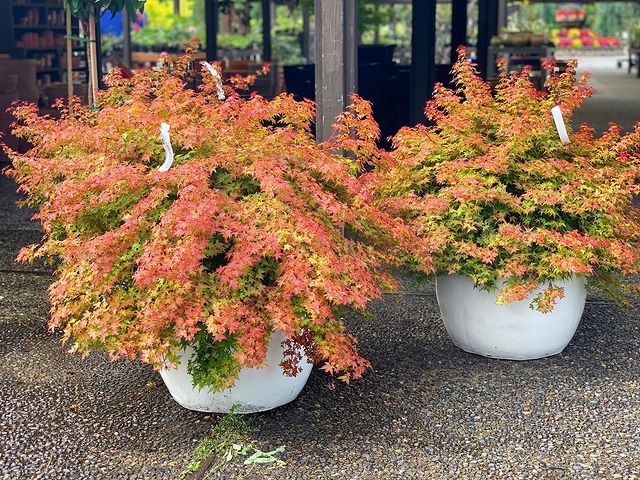
Dwarf Japanese maples grown as bonsai specimens indoors do not develop and flourish at the same success rate as those cultivated outside precisely because of the specific environment in which they are grown, which is something you should keep in mind.
Diseases and Pests
In addition to the risk of root rot due to inadequate conditions or improper watering, the dwarf Japanese maple tree is susceptible to mold, mites, and aphids, which seldom cause any major and severe problems.
The appearance of a fungal disease causes long-term damage to the tree, unlike insects that do not cause much harm.
When it comes to other diseases, the Japanese dwarf maple plant can be harassed by powdery mildew, tracheomycosis, and anthracosis.
Powdery mildew destroys the beautiful appearance of the tree, but it can be easily cured with fungicides.
For successful treatment of this small tree in the case of trichomycosis, which causes the plant to die, it is necessary to remove the infected parts in the beginning stages and continue to care for and nurture the plant more closely.
Lastly, anthracosis, which causes red and brown spots on young leaves and fungus on shoots, can be cured by removing these shoots and fungicides).
Proper care, which includes moderate watering and changing the mulch at least once a year, prevents the occurrence of these diseases.
If you want to learn about one of the most popular red cultivars of dwarf Japanese maple used for bonsai, Hime shojo, check out the video below!
Frequently Asked Questions
Why is my dwarf Japanese maple turning green?
Grafting a hard-to-propagate cultivar onto one with green foliage, insufficient or improper type of nutrition and soil, or just the plant getting old are some of the possible reasons for this. But, the number one suspect for your dwarf Japanese maple getting green is inadequate sun exposure.
Are dwarf Japanese maples’ roots invasive?
Dwarf Japanese maple is a small tree whose roots are shallow and do not present a threat to your foundation.
Editor’s Recommendations
Create Your Own: Making Your Own Bonsai Tree







